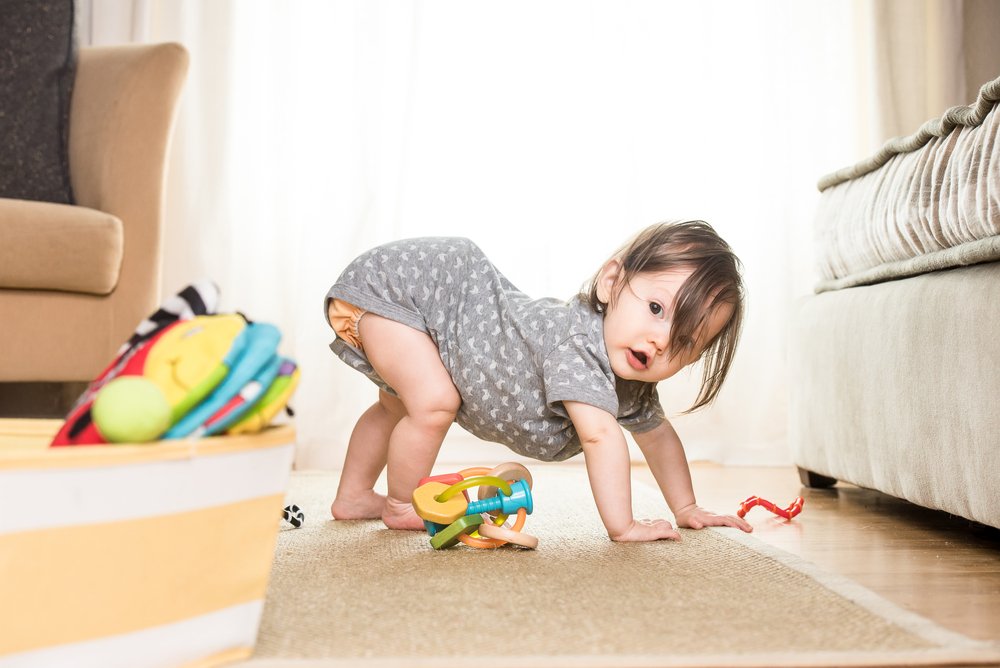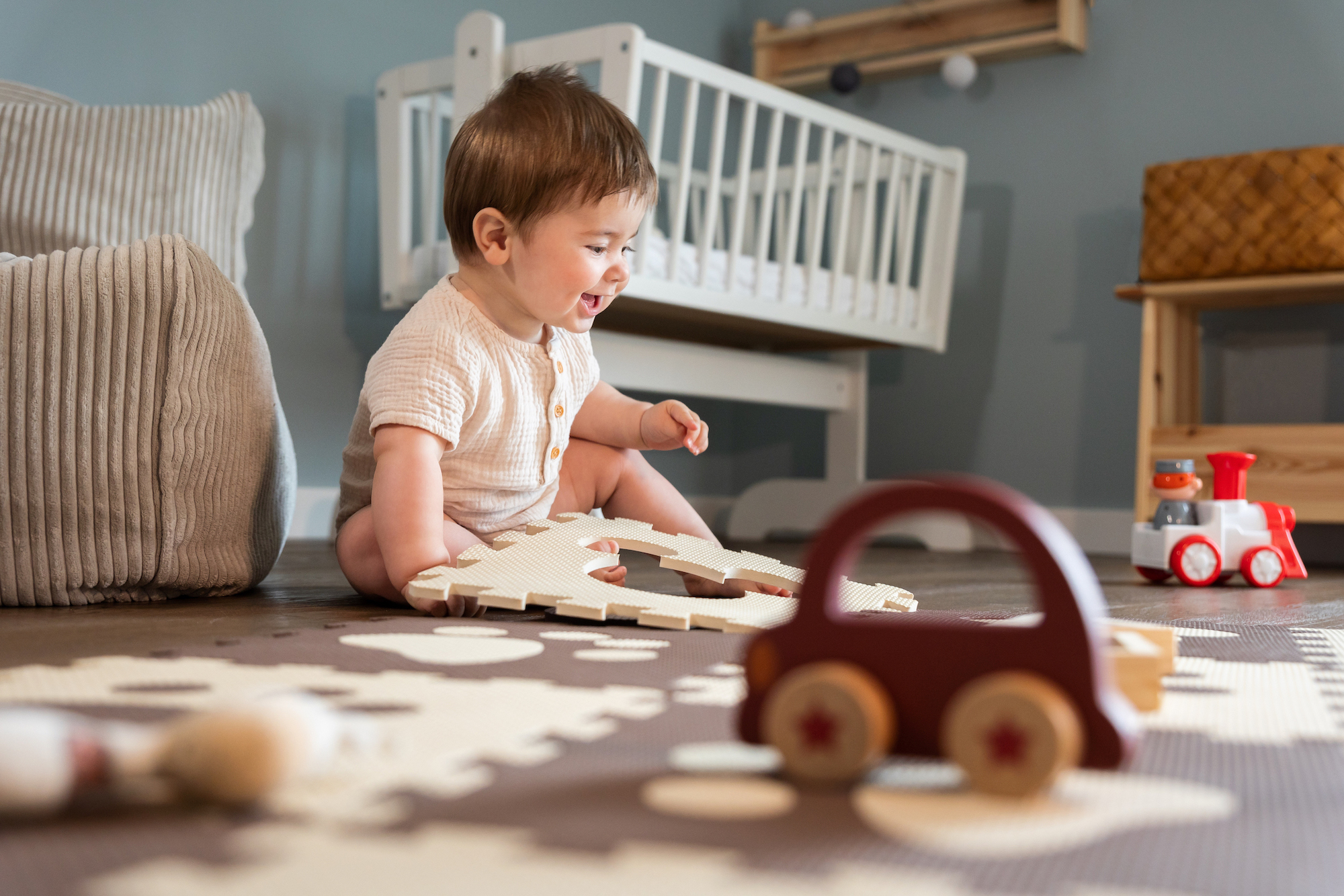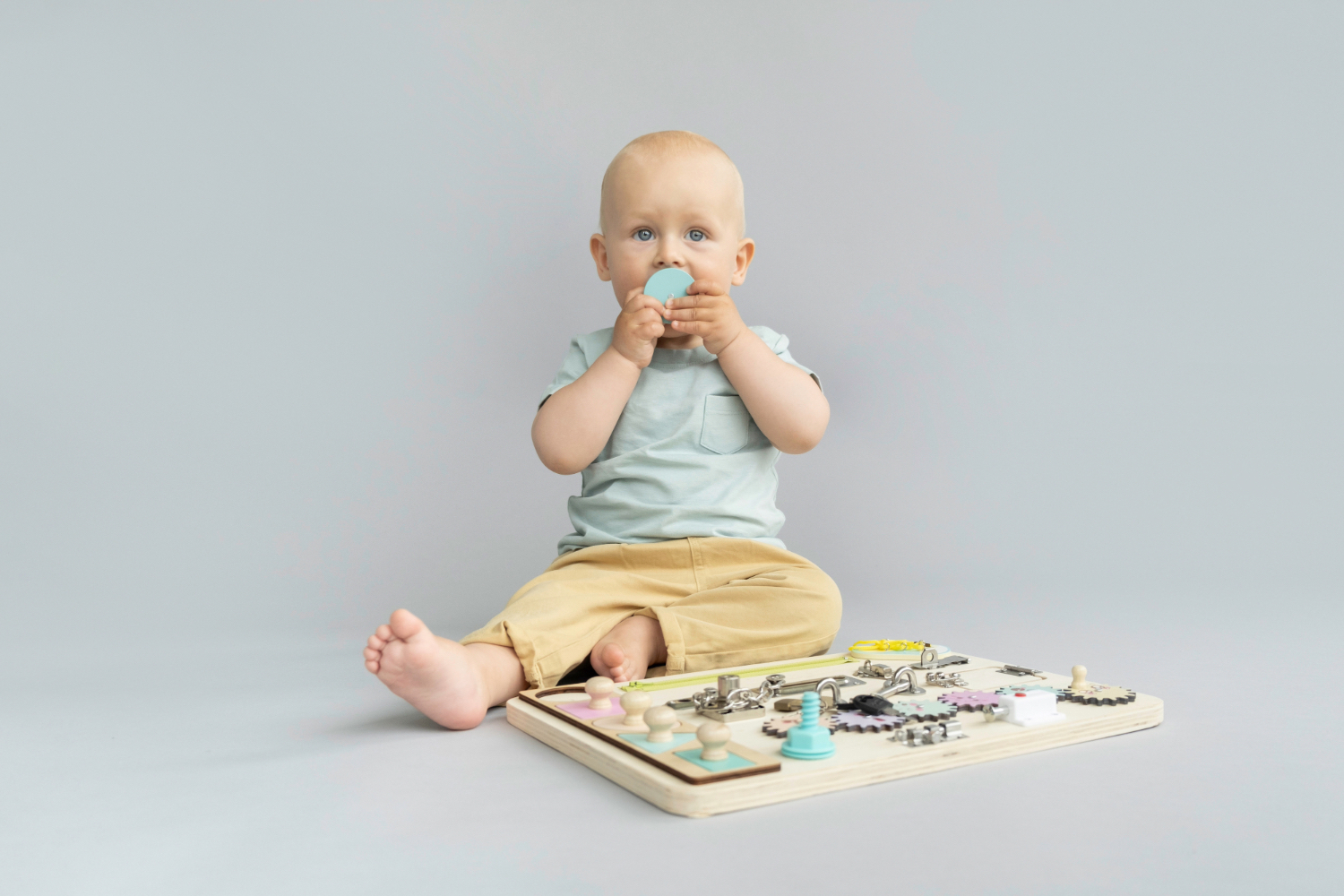Key points:
- Babies can crawl in various styles, not just hands-and-knees.
- Key is the desire to move and explore.
- Styles: classic, bear, belly, bottom scooter, crab, rolling crawl.
- Atypical crawling isn’t concerning, but asymmetry might warrant evaluation.
Is your baby ready for crawling? Around 7-9 months most babies master the hand-and-knee crawling method, but others develop alternative styles of crawling that work so well for them that they never progress to the traditional hand-and-knee crawling. Here are some types of crawling styles your baby can adopt.
Different crawling styles
Not all babies crawl in the traditional way –alternating hands and knees–, some babies use their belly to move, others scoot on their bottoms using their hands to propel themselves forward, and some babies use one leg down in a crawling position and extend the other on the floor to move forward. So, as long as the crawling method coordinates the movements of each side of the body and your little one uses their arms and legs equally, you don’t have to worry about it. No matter what method your baby adopts, remember that the important thing is that they are showing a desire to move independently and explore their surroundings.
These are the different styles of crawling according to the AAP (American Academy of Pediatrics):
-
Classic hands-and-knees or cross crawl
Your baby distributes their weight on their hands and knees, then moves one arm and the opposite knee forward at the same time. This is the most common type of crawling.
-
Bear crawl
It looks like the classic crawl, but your baby keeps their elbows and knees straight, walking on hands and feet like a bear.
-
Belly or commando crawl
Your baby moves their body forward with their arms while dragging their belly on the floor. This can be an efficient way of moving around, but it will definitely result in dirty clothes!
-
Bottom scooter
Your baby scoots around on their bottom using their arms to move themselves forward. This type of crawling will never be as fast as the classic hands-and-knees crawl, but it gets the job done. Often, bottom scooters are babies who have also really resisted tummy time.
-
Crab crawl
Your baby will move backward or sideways like a crab, propelling themselves with their hands. This type of crawling usually occurs when your baby is just learning how to crawl. This phase usually doesn’t last longer than a week or two.
-
Rolling crawl
Your baby gets to their destination by rolling from one place to another. While this is not strictly crawling at all, some babies become so efficient at rolling that they never really develop the crawling stance, because they simply roll over and over until they get to their destination.
Take into consideration that atypical crawling patterns do not necessarily indicate a problem, but asymmetry in crawling can be a red flag. So, if you have concerns about the way your baby is crawling, talk with your pediatrician or have your baby evaluated by a pediatric physical therapist.
Keep in mind that there are some babies who don’t crawl, and go directly to standing, so, if you notice your little one doesn’t crawl but has developed other milestones like rolling over, you can be calm. And, remember, each baby develops at their own pace and for some, it may take more time to crawl than others.









6 Responses
Hi. Please advice
When my daughter was 10 months she started bottom scooting which made it difficult for her to pull up and stand with furniture, she would rather pull me to stand.
Now she is 16months and still learning to walk, my concern is that when she falls down she cant lift herself up without support. Should i be worried?
Hi, Brenda! Each baby develops at their own pace, however, try to talk about it to your pediatrician in your next visit. In the meantime, you can do activities with your daughter to encourage her standing:)
Hi please what could be happening..
My baby took her first steps by 9month but was sick by the click of 10month only to recover and being scared of walking now unless she is held by the hands..and she has started walking perfectly before. Now..pls enlighten me am a first time mum
Hi! Thanks for your comment. Your baby being afraid to walk shouldn’t cause an enormous concern. The fear of walking in actuality isn’t that; it is a fear of falling. Because the leg muscles in children are not fully developed, they are prone to falling when taking their first steps. Your baby is still very on time to start taking her first steps. If you continue to feel worried, you can consult with your pediatrician in your next visit or video conference =)